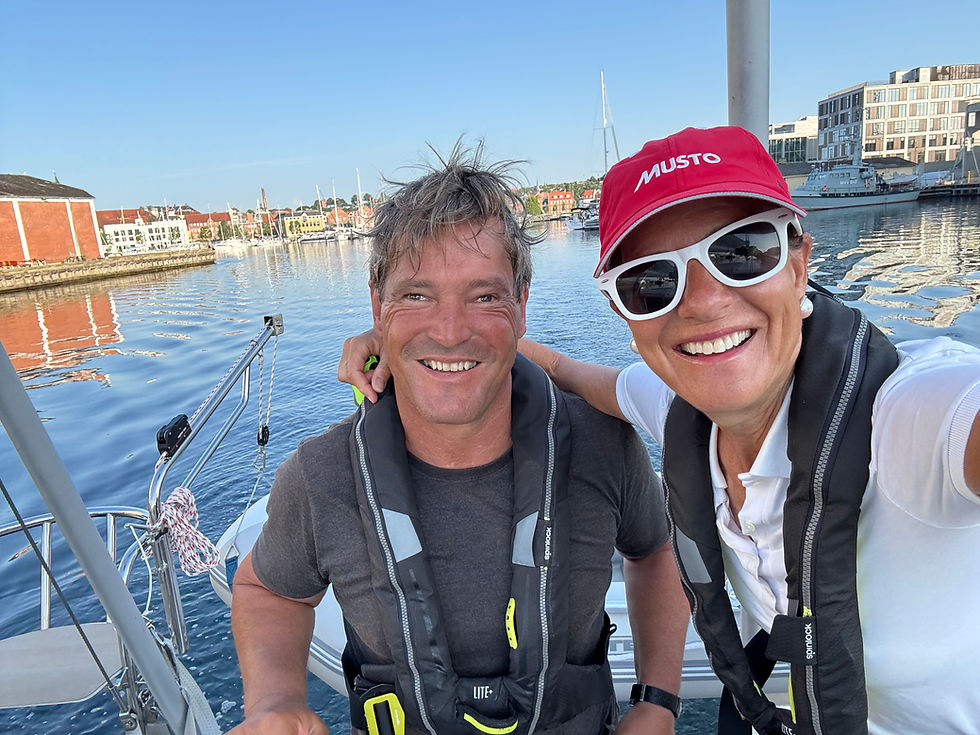West-Terschelling, Netherlands.
- Beth Solomon

- Jul 6, 2024
- 2 min read
Updated: Aug 1, 2024

Two hours after our arrival in Terschelling, the wind blew the rainclouds away, revealing a strong, white sun.

As we walked into town, we marveled. Where had the sea gone?
For as far as we could see, the Wadden Sea had dried up like a desert. Wow. That’s why slaloming through the channel had been so important. It turns out, the charming, antique, flat-bottomed Dutch sailboats dotting the marinas are made for this low-tide happening. You can hire a 100-year-old typical Dutch sailing vessel specifically to “fall dry,” the expression for running aground on purpose.
You “fall dry,” on the sand, step off the deck, and explore this unbelievable UNESCO World Heritage Site of bird, seal and shellfish habitat — then pop back on deck when the tides flood back in.

Or, “fall dry” for cocktails. Talk about “joie de vivre.” The Dutch even make a celebration out of running aground!


Despite Terschelling’s history of shipwrecks, the island turned out to be spectacularly beautiful and full of tasty delights.

In Europe, “unpopulated” and “rural” simply indicate that the bakeries, breweries, and fish markets are less well known, but often even more delightful than in busier locales.

On Terschelling, (pop. 4000), the local Scelling beer danced seductively on our tongues with a dark, hazy, sweetness. We dove into luscious lamb paté, a local truffle pepperoni, sharp sheep cheeses, mouth-watering baked goods, and smoked eel (like eating smoky butter). Grocery stores overflowed with locally grown veggies.


In proper Dutch fashion, bike paths curved along the dikes surrounding the island and led us into stunning nature preserves. If this is normal for “waiting for the gale to pass,” sign us up! 🇳🇱❤️🍷🧀🍾




Comments